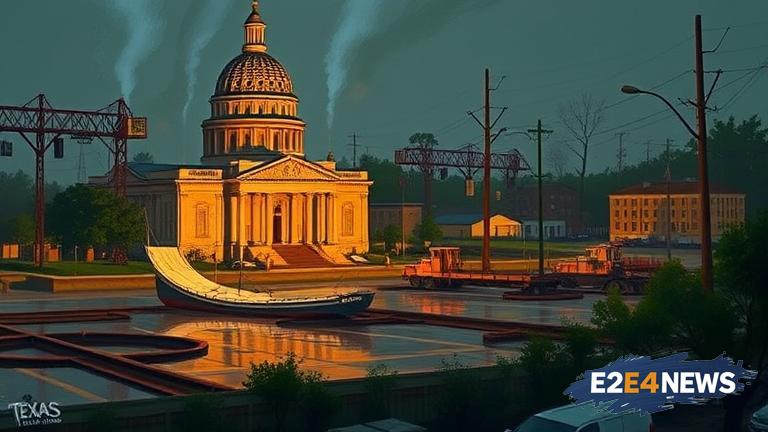Texas lawmakers are taking a closer look at the state’s disaster plans in light of recent floods and uncertainty surrounding funding from the Federal Emergency Management Agency (FEMA). The move comes after severe flooding in various parts of the state, which has put a strain on local resources and highlighted the need for more effective disaster preparedness and response strategies. Lawmakers are working to identify areas where the state can improve its disaster planning and response efforts, with a focus on mitigating the impact of future floods and other disasters. One key area of concern is the state’s flood mitigation infrastructure, which has been criticized for being inadequate in the face of increasingly severe weather events. To address this, lawmakers are exploring options for investing in new infrastructure projects, such as flood-control measures and emergency response systems. Additionally, there is a growing recognition of the need for more effective communication and coordination between state and local agencies during disaster response efforts. This includes improving data sharing and collaboration between agencies, as well as enhancing public awareness and education campaigns to help residents prepare for and respond to disasters. Furthermore, lawmakers are also examining the state’s disaster funding mechanisms, with an eye towards identifying more sustainable and reliable sources of funding. This could involve exploring alternative funding models, such as public-private partnerships or dedicated disaster relief funds. The uncertainty surrounding FEMA funding has added a sense of urgency to these efforts, as lawmakers recognize that the state cannot rely solely on federal support in the event of a disaster. Instead, they are working to develop a more comprehensive and self-sufficient disaster planning framework that can withstand the challenges posed by increasingly frequent and severe weather events. The Texas Legislature has already taken steps to address these issues, including the passage of several bills aimed at improving disaster preparedness and response. However, more work remains to be done, and lawmakers are committed to continuing their efforts to ensure that the state is better equipped to handle the challenges posed by disasters. The floods that have affected Texas in recent years have been particularly devastating, with many communities struggling to recover from the loss of property and livelihoods. As the state moves forward, it is clear that a more proactive and comprehensive approach to disaster planning will be essential for mitigating the impact of future disasters. By investing in new infrastructure, improving communication and coordination, and developing more sustainable funding mechanisms, Texas lawmakers hope to create a more resilient and disaster-ready state. The road ahead will undoubtedly be challenging, but with a renewed focus on disaster planning and preparedness, Texas is poised to emerge stronger and more resilient in the face of adversity.
